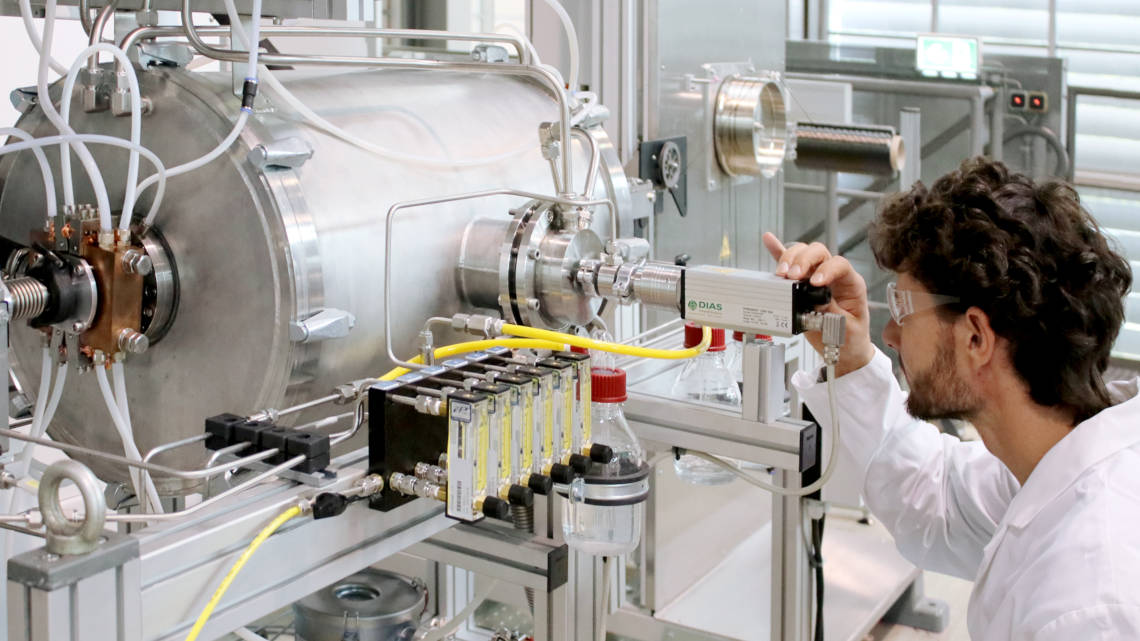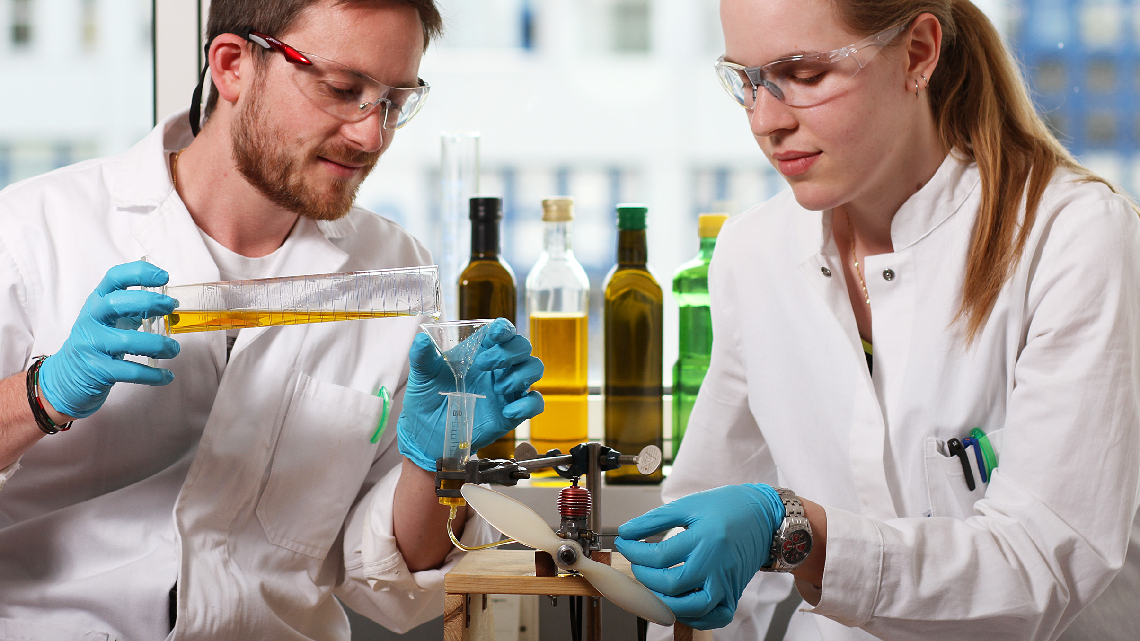Biocarbon fibers are pulling their weight
High-tech fibers made from renewable resources can be a real alternative to their petroleum counterparts, thanks to a new ultra-high-temperature process.

For some time now, it has been possible to produce carbon fiber, an important high-tech material, from renewable raw materials instead of crude oil. However, so far, the biobased version could not compete as the mechanical properties were inferior to the petroleum equivalent. Thanks to an ultra high temperature oven, this is now likely to change, as fiber specialists at the Fraunhofer Institute for Applied Polymer Research (IAP) in Potsdam report. At the K plastics trade fair, taking place in Düsseldorf from 16 to 23 October 2019, the researchers intend to present the first products and preliminary stages.
Insufficient stiffness and strength
"The production of carbon fibers from precursors based on renewable raw materials like cellulose, lignin or hemicellulose is possible in principle, but common pyrolysis temperatures of up to 1600 °C limit mechanical properties such as stiffness and strength. These bio-based carbon fibers do not represent a serious alternative to their petroleum-based counterparts in high-performance applications," explains Jens Erdmann of IAP the problem. The so-called precursors are indispensable as intermediate products because fibers cannot be produced directly from pure carbon.
Ultra high temperature oven improves fiber structure
Chemically, the previous inferiority of biocarbon fibers can be explained by the small proportion of ordered carbon structures in the carbon fiber and the orientation of many carbon structures that does not correspond to the fiber direction. The Fraunhofer researchers have now developed a solution to these two problems, Erdmann explains: "we had a special ultra high temperature oven built in which the bio-based carbon fibers are post-treated for a few seconds at temperatures of between 2700 and 2900 °C. In this temperature range, the carbon structures in the fiber are stretched so that they align along the fiber axis. This makes the fibers much stronger and stiffer and produces mechanical properties on par with those of petroleum-based carbon fibers." This makes the fibers much stronger and stiffer and gives them mechanical properties that reach the level of petroleum-based carbon fibers. "This enables us to produce so-called high modulus fibers," Erdmann sums up.
Looking for cooperation partners
The ultra-high temperature oven opens up many possibilities for the Fraunhofer IAP and its cooperation partners to develop lightweight and stable materials. "The oven is well-suited for the testing of many different parameters in a short time using little amounts of fiber material." Erdmann is looking for further industrial partners. For example, carbon fibers are used in the lightweight construction of vehicles and aircraft, they serve as carbon concrete for the construction and renovation of bridges, and they advance the energy revolution as materials for wind turbines and hydrogen tanks.
bl/um


